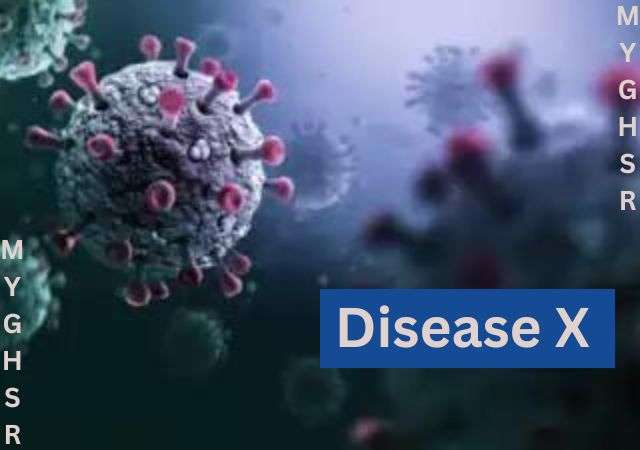Disease X Pandemic: What Is Disease X, Unveiling the Risks and Solutions 2023: In recent years, the scientific community has issued dire warnings about the impending danger of Disease X, a mysterious pathogen that may be the start of yet another devasting pandemic. The World Health Organization (WHO) came up with the term “Disease X” to describe the terrifying possibility of a global pandemic brought on by a pathogen that is currently unidentified as causing human disease. This article examines the salient features of Disease X as described by Kate Bingham, the UK’s Vaccine Taskforce’s 2020 chair. Bingham’s observations shed light on a variety of topics, including the potential pandemic potential of Disease X, the mechanisms underlying viral mutation, the spread of viruses from animals to people, and the causes of the increasing frequency of pandemics.
#DiseaseXAlert, #PandemicPreparedness, #ViralThreats, #HealthSecurity, #HiddenViruses, #GlobalHealthRisk, #EpidemicWatch, #ZoonoticTransmission, #VirusMutation, #StaySafeStayInformed
The Pernicious Threat of Disease X:
Using the influenza pandemic of 1918–19, which killed at least 50 million people worldwide and outnumbered those who lost their lives in World War I, Kate Bingham makes a startling comparison between Disease X and that epidemic. The sobering truth is that we currently risk having a similar number of people killed by viruses that already exist. More viruses exist on our planet than all other types of life combined. Although not all viruses are dangerous to people, many of them are.
Mutation and the Evolving Threat:
Bingham highlights how viruses have the ability to mutate into new varieties that are skilled at infecting people and dodging the human immune system. This raises the unsettling possibility of coming across viral mutants that are immune to all currently available antiviral medications and vaccines. Viruses are constantly changing, which adds to their adaptability and resilience.
The Animal-Human Connection:
A crucial component of Disease X’s potential emergence is the transmission of viruses from animals to humans. Bingham emphasizes that viruses naturally try to replicate as much as they can in different hosts, which results in ongoing mutation and adaptation. Some of the most dangerous viruses, including smallpox, measles, Ebola, and HIV, began life in animals before evolving to become highly contagious among humans. Global health is seriously at risk from this zoonotic transmission.
Unidentified Viruses: The Unseen Threat
The existence of numerous unidentified viruses increases the severity of the threat posed by Disease X. Despite the fact that there are 25 virus families known to science, each of which contains hundreds or thousands of different viruses, the true scope of viral diversity is still unknown. Bingham’s warnings are especially foreboding because she contends that there may be over a million unknown viruses hiding in various species, ready to jump to humans, significantly mutate, and possibly cause extensive destruction.
Disease X Pandemic: What Is Disease X, Unveiling the Risks and Solutions 2023
Factors at Work in the Rise of Pandemics
The threat of Disease X is heightened as a result of a number of interrelated factors that Kate Bingham identifies as contributing to the rising frequency of pandemics.
Globalization: Unprecedented levels of travel and connectivity define the modern world. As a result of this globalization, pathogens can quickly spread across continents, making containment and control more difficult.
Urbanization: The expansion of cities and urban areas brings people and wildlife into close proximity. In densely populated urban areas, disease outbreaks are made easier by disease hotspots.
Habitat destruction: The encroachment of land development, industrialization, and deforestation on wildlife habitats forces wildlife closer to human settlements. The likelihood of zoonotic spillover incidents is increased by this proximity.
Modern agriculture: Industrialized, intensive farming techniques foster the spread of disease. Drug-resistant pathogens have evolved as a result of the close quarters that factory farms’ animals are kept in and the use of antibiotics.
Degradation and loss of wetlands disrupt the ecosystems that serve as barriers to the spread of disease. The interactions between people, animals, and pathogens are frequently tightly controlled by wetlands.
Disease X Pandemic: What Is Disease X, Unveiling the Risks and Solutions 2023
Conclusion:
A potentially catastrophic global epidemic brought on by an unidentified pathogen is represented by the specter of Disease X, which looms menacingly in the distance. Kate Bingham’s observations serve as a stark reminder of the existential threat posed by the ongoing virus mutation, zoonotic transmission, and the vast reservoir of undiscovered viruses. The urgency of stepping up global preparedness and response efforts is highlighted by the factors causing pandemics to become more prevalent, including globalization, urbanization, habitat destruction, modern agriculture, and wetland destruction.In this age of global connectivity, proactive measures like enhanced surveillance, sustainable land-use policies, and international cooperation are essential to reduce the risk of Disease X and avert pandemics that could have just as devastating an effect on humanity as the COVID-19 pandemic, if not more so. We all have a duty to pay attention to these alerts and act swiftly to protect the health of the world.

